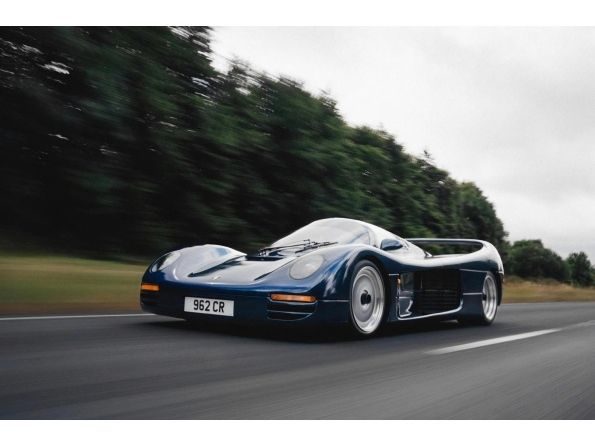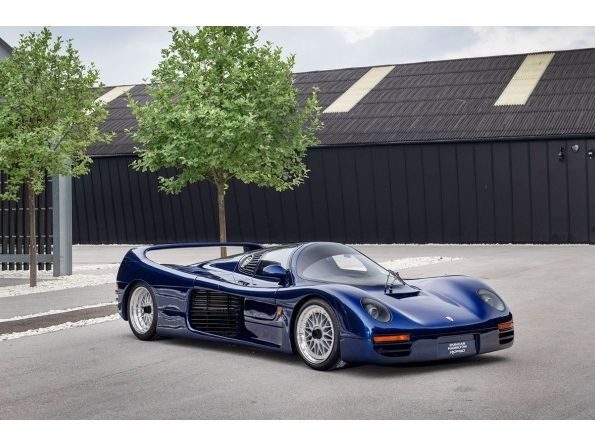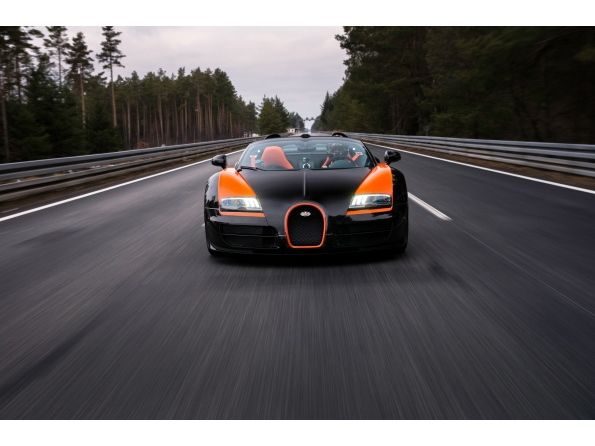Categories more
- Adventures (17)
- Arts / Collectables (15)
- Automotive (37)
- Aviation (11)
- Bath, Body, & Health (77)
- Children (6)
- Cigars / Spirits (32)
- Cuisine (16)
- Design/Architecture (22)
- Electronics (13)
- Entertainment (4)
- Event Planning (5)
- Fashion (46)
- Finance (9)
- Gifts / Misc (6)
- Home Decor (45)
- Jewelry (41)
- Pets (3)
- Philanthropy (1)
- Real Estate (16)
- Services (23)
- Sports / Golf (14)
- Vacation / Travel (60)
- Watches / Pens (15)
- Wines / Vines (24)
- Yachting / Boating (17)
Published
04/11/2023 by London ConcoursThe London Concours, presented by Montres Breguet, is excited to announce that its 2023 show - now under three months away - will chart the fascinating development of automotive aerodynamics through the ages. The event, which runs from June 6th to 8th in the heart of the City of London, will feature a stand-out line-up of cars that exemplify car manufacturers’ never-ending quest for aerodynamic innovation - whether in the pursuit of ultimate top speed, or thrilling on-track performance.
The curated display will feature cars from the early aeronautically inspired innovators in the 1920s and 1930s, right up to the very latest super and hypercars. Held at the Honourable Artillery Company, the event will bring the world’s most spectacular supercars and classics together for the capital’s ultimate automotive summer garden party.
Machinery on show this June will include the likes of the 1991 Schuppan 962 CR P1 – among the most visually arresting road cars of all, and one of just 6 cars in existence. The ambitious project was led by Australian racer Vern Schuppan, a winner at Le Mans back in 1983 at the wheel of a Porsche 956. His creation was based on the carbon-fibre chassis of the Porsche 962 racer, giving the Schuppan 962 a feather-weight kerb weight of just 1,050kg. Thanks to a 3.3-litre type-935 twin-turbo flat-six, putting out 600bhp, performance was wild – 0-60 mph in just 3.5 seconds, and 230 mph flat out. With a dramatic full-width rear wing, narrow cockpit and other 962 racer derived aero elements used to keep the power in check, the Schuppan 962 is among the most aerodynamically outrageous cars ever fitted with number plates. A true racer for the road.
Guests will also have the chance to pore over another motorcar with firm links to Porsche motorsport: the wild 993 GT2. A homologation special concocted for the FIA GT2 series, the 993 GT2 arrived in the mid ‘90s, taking the world by storm with its raw power and wing-adorned styling. The strictly rear wheel drive machine was raw and stripped out, weighting just 1,295kg, some 200kg lighter than the 993 Turbo. With at least 430bhp on tap from its twin-turbo flat-six, performance was electric: 0-60 mph in 3.9 seconds and a top speed of 187 mph. The GT2’s body was similarly pumped-up, with a massive rear wing – featuring air-scoops to feed that hungry flat-six – and an oversized front splitter ensuring superb performance on track. Widely considered to be the ultimate in air-cooled 911s, just over 160 GT2s were built between ’93 and ’98.
This June’s show will feature the car with perhaps the most famous rear wing of all: the 1970 Plymouth Superbird. Based on the Plymouth Road Runner, the Superbird was heavily modified with the eye-wateringly high-speeds of NASCAR racing in mind. The changes for the V8 machines – which packed up to 425 bhp with the hottest motor – focused chiefly on the aerodynamics. Changes to the body were designed using computer analysis – revolutionary for the time – resulting in an elongated, smoothed off nose cone, and – of course – that famous rear wing. Towering above the ‘trunk’, it was jacked up so it could operate in ‘clean air’, up above the roofline. The enhancements delivered far greater downforce and created one of the most recognisable automotive silhouettes of all.
The display will also include examples of aerodynamic innovation from modern hypercars, with the now iconic McLaren P1 flying the flag for Britain. When launched back in 2013 the P1 was unlike anything the world had seen before, with violent performance thanks to a 3.8-litre twin turbo V8, and potent electric motor. Aerodynamics were also central to its otherworldly, high-tech appeal; the P1 could hunker down dramatically in its most aggressive track mode. With active rear wing extended fully and working in tandem with the slashed and vented bodywork, the P1 could generate 600kg of downforce at 160 mph, helping it lap the Nürburgring in under 7 minutes. That rear wing also had a DRS (Drag Reduction System) function, just like on an F1 car, activated via a button on the steering wheel. By the time it left production in 2015, this 903bhp, 217 mph machine was already assured of its place in the pantheon of hypercar greats.
The event will play host to one of the fastest open top cars of all time: the remarkable Bugatti Veyron Vitesse, in ultra-rare ‘WRC’ (World Record Car) edition form. One of just eight WRCs produced, the special run of cars was created in 2013 to commemorate a 1184bhp Veyron Vitesse hitting 254mph at a test track in Germany, becoming, for a period, the fastest car in the world. Aerodynamics were of course key to such a feat; along with the Veyron’s slippery shape and active rear spoiler, the Vitesse featured a specially developed roof spoiler along with an intricately designed windbreak to ensure unruffled open-top driving – even when exceeding 250 mph!
This is just a taste of what to expect from this June’s event, which will feature a spectacular range of machinery from a range of exotic marques. Further class announcements will follow in the coming weeks and months, as we build towards the 7th edition of this unmissable event.
Andrew Evans, London Concours Director, said: “We’re delighted to announce that our show this June will feature this celebration of aerodynamic innovation through the ages. Car manufacturers’ continued quest for higher rates of downforce and lower drag coefficients, has resulted some of the most dramatically styled motor cars the world has ever seen. Our team of expert curators have relished the fascinating challenge of assembling the stunning machinery for this category - we can’t wait for guests to see the results!”
“In addition to a fantastic selection of cars – the best yet assembled - guests to the Honorary Artillery Company will be treated to a decadent range of food and drink options – including a brand-new Club Concours hospitality experience, engaging live stage discussions, as well as a carefully selected line-up of luxury brands and boutiques. London Concours 2023 is set to be another occasion of total automotive indulgence.”




















